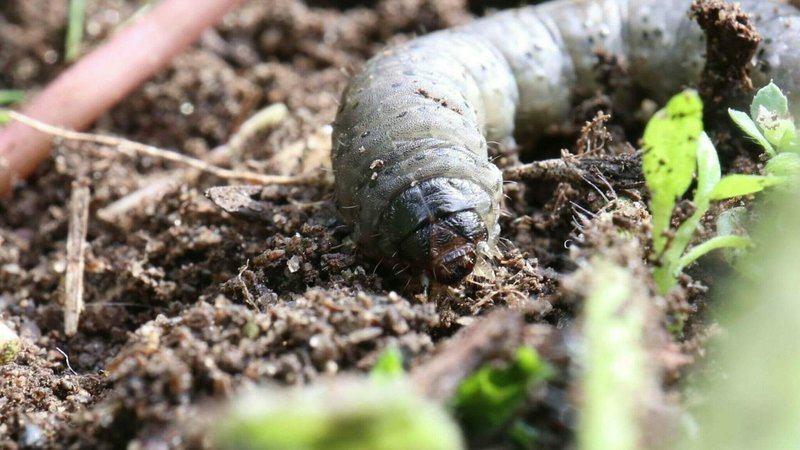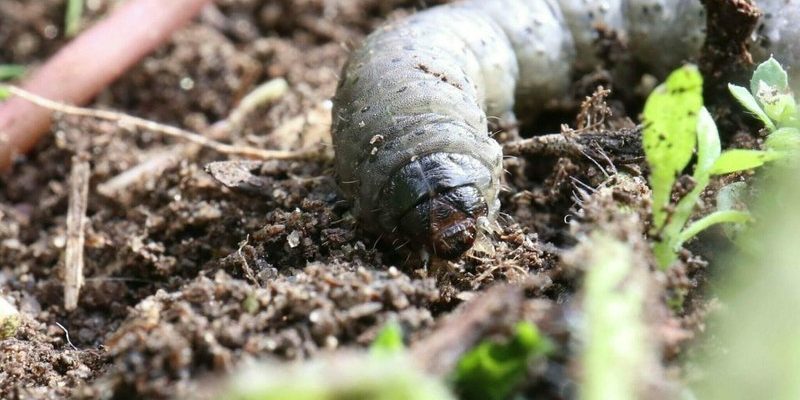
So, what are grub worms anyway? Grub worms are actually the larval stage of various beetles, mainly the Japanese beetle, and they thrive beneath your sod, munching away at grass roots. Think of them as the uninvited guests at a garden party—they sneak in, eat all the snacks, and leave you with a mess to clean up. In this guide, we’ll explore the early signs of grub worm infestation, how to identify them, and what you can do to salvage your precious lawn.
What are Grub Worms?
Grub worms are the larval form of several types of beetles, typically including the Japanese beetle, June bug, and others. These little critters are often white or cream-colored with a C-shape body. They live just beneath the soil’s surface, where they feast on the roots of your grass and other plants, leading to dead patches in your lawn.
You might be wondering how they get there in the first place. Adult beetles lay their eggs in the soil during late spring or early summer. Once the eggs hatch, those tiny, unsuspecting grubs start to munch away on the roots of your grass. Over time, this can lead to a lawn that looks more like a battlefield than a backyard oasis.
Recognizing what these pests are and understanding their life cycle is crucial. The more you know, the better you can protect your lawn. Just think of them as tiny lawn ninjas—silent but potentially damaging if you don’t catch them in time.
Early Signs of Grub Worm Infestation
If grub worms are sneaking around in your lawn, there are some early warning signs you can watch for. The first sign is often how the grass responds to pressure. When you step on a section of your lawn, does it feel spongy? If so, that could indicate that the roots are weakened due to grub damage.
Another sign to keep an eye out for is discoloration. If you notice patches of grass turning brown, it might be due to the roots being eaten away. This browning often starts near the edges of the affected area, so if you see a sudden change in color, it’s time to investigate.
Lastly, if your lawn is becoming more susceptible to weeds, that’s another telltale sign. With the grass roots compromised, weeds can take hold and flourish in areas where grubs have been munching.
Identifying these signs early can save you from facing a much bigger issue down the road. No one wants to see their beloved lawn transformed into a patchy wasteland, after all.
Checking for Grub Worms
So, how do you actually check for these pesky grubs? It’s easier than you might think! Start with a simple visual inspection. Grab a small patch of grass (about 12 inches square) and peel back the sod. If you see any grubs, they’ll likely be there, curled up and ready to munch.
You can also look for dead patches in the grass. If you find areas where the grass pulls up easily—almost like peeling off a band-aid—that’s a solid indication that grubs might be at work.
Another method involves using boiling water. Pour a small amount in a section of your lawn. If grubs are present, they’ll surface as the soil heats up, making them easier to spot. Just be careful not to scorch your grass!
Checking your lawn regularly, especially throughout the warmer months, can help you catch these little invaders early.
How Many Grub Worms are Too Many?
You might be wondering, “How many grubs are a problem?” A small number of grubs might not cause significant damage, but if you find 10 or more grubs per square foot, you could be facing trouble. When they multiply in large numbers, the damage can spread quickly.
Consider it like a group of friends at a buffet. A few can enjoy a plate without any issue, but when everyone goes back for seconds (or thirds), that’s when it becomes a problem. Regular checks can help you determine if you’re at a healthy level or if it’s time to take action.
Don’t ignore the early signs! The sooner you act against high grub populations, the better chance you have of saving your lawn.
Preventing Grub Worm Infestation
Prevention is always easier than cure. The first step to keeping grub worms at bay is to promote a healthy lawn. Strong grass roots can withstand a bit of munching from these pests, so ensure your lawn receives proper care.
Here are some effective prevention strategies:
- Regular Watering: Make sure your grass is adequately watered, especially during dry spells.
- Fertilizing: Using high-quality fertilizers can strengthen your grass, making it less appealing to grubs.
- Maintaining Soil Health: Aerate your lawn regularly to promote healthy root growth.
- Natural Predators: Encourage birds and beneficial insects that will munch on grubs. Beneficial nematodes can also be introduced to target grubs specifically.
Taking preventive measures can save you from dealing with a full-blown infestation later. Trust me, your future self will thank you!
Dealing With an Infestation
If you’ve already got a grub worm problem, don’t panic! There are several options for dealing with them. Depending on the severity of the infestation, you might consider chemical treatments or more natural methods.
If you opt for chemicals, there are specific insecticides designed to target grub worms effectively. Just be sure to follow the instructions carefully. Remember, applying more isn’t always better—sometimes it can do more harm than good.
Natural treatments, like using beneficial nematodes or milky spore, are also effective. These options can help manage grub populations without harming your grass or the environment.
Taking action quickly is crucial to saving your lawn. If you notice that grub damage is already present, acting sooner rather than later can help prevent further destruction.
When to Call a Professional
Sometimes, despite your best efforts, you may find yourself overwhelmed. If you’re not seeing any luck with your DIY methods or if the infestation is severe, it might be time to bring in a professional. Remember, there’s no shame in asking for help, especially when it comes to protecting your lawn.
Professionals have access to more potent treatments and can assess your lawn’s health holistically. They’ll also be able to give you customized advice on maintaining a healthy lawn moving forward.
In the end, keeping grub worms under control is all about awareness and action. With a little knowledge and timely intervention, you can keep your lawn lush and beautiful!
In conclusion, watching for the early signs of grub worms under sod is essential for maintaining a healthy lawn. From checking for discoloration to knowing how many grubs are too many, taking proactive measures can help you tackle any issues before they escalate. Remember to promote a healthy lawn and, if needed, don’t hesitate to seek professional help—your grass deserves it!

